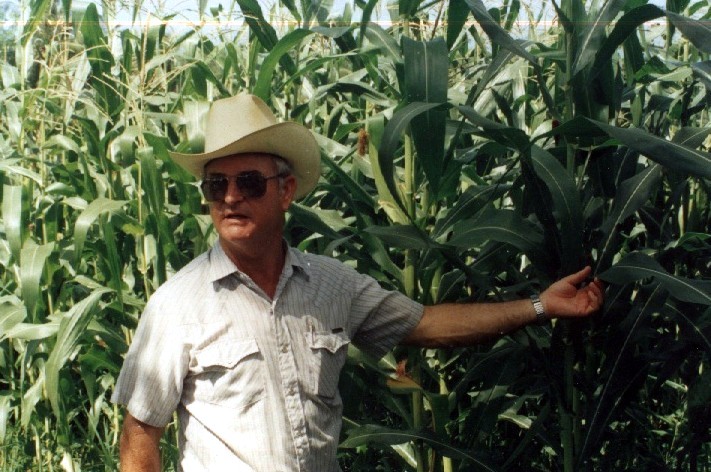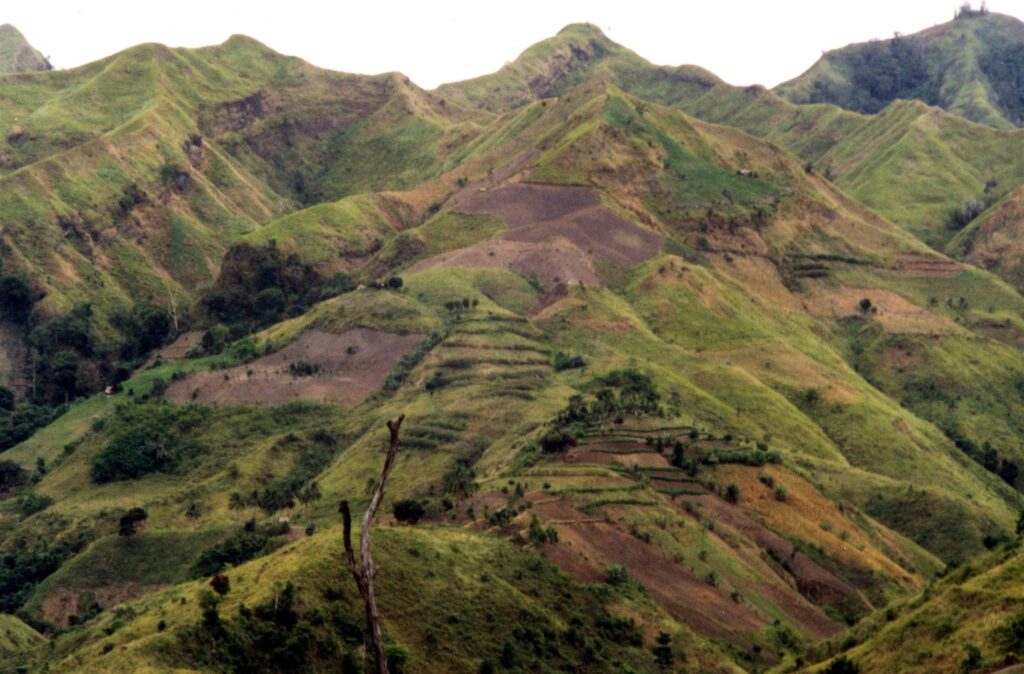Text and Photos by Henrylito D. Tacio
There are wars and there are wars. They are present everywhere. In Mindanao, there is a battle between the insurgent groups and the government’s military troops. But there is a kind of war that has been here since time immemorial and yet no one notices the conflict. It is called soil erosion.
“Soil erosion is an enemy to any nation – far worse than any outside enemy coming into a country a conquering it because it is an enemy you cannot see vividly,” declares Harold R. Watson, recipient of the 1985 Ramon Magsaysay Award for peace and international understanding. “It’s a slow creeping enemy that soon possesses the land.”
Watson knows. He was the former director of the Mindanao Baptist Rural Life Center (MBRLC), a non-government organization based in Kinuskusan, Bansalan, Davao del Sur. When he came to the Philippines in the 1960s, he was already sounding the alarm of deforestation and soil erosion.
But people only laughed at him. They told him, “We’re never going to run out of trees!” That was before several presidents, other Asian governments, the United Nations – and countless farmers – recognized the value of his insights.
A few hundred years ago, at least 95 percent of the Philippines was covered by tropical rainforest. However, the country lost one-third of its forest cover between 1990 and 2005. Although the current deforestation rate is around 2 percent per year, a 20 percent drop from the rate of the 1990s, deforestation continues unabated.
In 1971, Watson opened to the public the MBRLC, a research and demonstration farm. In the beginning, they floundered. “When I got here, I had no idea what the problems were up in the hills,” said the American agriculturist who grew up in Mississippi. “Farming looked pretty good on the surface.”
Soon, Watson discovered that the problem was the surface: It was washing away. Loggers – both legal and illegal – were hauling trees out of the once-lush mountains, leaving behind denuded hillsides. Tribal people and migrants were using “slash and burn” methods ( kaingin) to clear and farm the uplands, and topsoil was disappearing faster than what can be replenished. The result: low production, hunger, and hopelessness.
“Most of these farmers don’t have a vision to see five or 10 years down the line,” Watson said. “Most live for one more day, and don’t lift their head up. They’re not thinking about erosion. It’s ‘What can I get out of the land today, right now?'”
Soil is the single most important resource on a farmland, which is built up over time. It takes 200 to 1,000 years to form 2.5 centimeters of rich topsoil. But on the average, farmlands are losing 2.5 cm of topsoil every 16 years, or 17 times faster than it can be replaced. “Soil is related to the earth much as the rind is related to an orange,” explains an American geologist. “It is the link between the rock core of the earth and the living things on its surface. It is the foothold for the plants we grow. Therein lies the main reason for our interest in soil.”
Soil erosion is the most common natural landscape forming process. Over thousands of years, erosion wears down mountains and deposits soil elsewhere to form plains, plateaus, valleys, river flats, and deltas. This type of erosion is known as natural erosion.
Erosion occurring at a rate that exceeds the rate of natural erosion is called accelerated erosion. Accelerated erosion can result from certain human land use practices. For soil to erode requires a combination of two factors – loose soil and a physical force that can transport the soil to a new location.
“Soil particles are loosened in several ways,” says Jim Chamberlain, a specialist in tropical forestry who has experience in the Philippines and other parts of East Asia. “The impact of raindrops on exposed soil can detach soil particles as can soil freezing and thawing.”
Soil particles may be detached from a stream bank during high water. Detached soil particles are then transported to a new location by some physical force, including water, wind, ice, or gravity. On forested lands, this force is flowing water. Wind is also an important force for soil transport on agricultural lands as in the 1930s Dust Bowl in the United States.
According to the UN Food and Agriculture Organization, the world is losing an equivalent of five to seven million hectares of farmland through erosion each year. This is equivalent to the land area of Belgium and the Netherlands combined. In the Philippines, “soil erosion is now the most serious environmental problem,” to quote the words of Dr. Eduardo Paningbatan, of the University of the Philippines at Los Baños.
Soil erosion makes farmlands infertile every year. Studies have shown that loss of a few centimeters of topsoil can reduce the productivity of good soils by 40 percent and poor soils by 60 percent. “No other soil phenomenon is more destructive worldwide than soil erosion,” wrote Nyle C. Brady in his book, The Nature and Properties of Soils. “It involves losing water and plant nutrients at rates far higher than those occurring through leaching.
“More tragically, however, (soil erosion) can result in the loss of the entire soil,” Brady continued. “Furthermore, the soil that is removed find its way into streams, rivers, and lakes and becomes a pollution problem there.” This is where sedimentation and siltation occur.
In Luzon, the four major basins – Bicol, Magat, Pampanga, and Agno – are in critical condition due to acute soil erosion and sedimentation. The Ambuklao Dam reservoir had its life halved from 60 to 32 years as a result of siltation.


Lester R. Brown and Edward C. Wolf, authors of Soil Erosion: Quiet Crisis in the World Economy, argued that erosion affects crop production in two ways. “The loss of topsoil reduces the inherent productivity of land, both through the loss of nutrients and degradation of the physical structure,” they explained.
“It also increases the costs of food production. When farmers lose topsoil, they may increase land productivity by substituting energy in the form of fertilizer. Hence, farmers losing topsoil may experience either a loss in land productivity or a rise in costs of agricultural inputs. And if productivity drops too low or agricultural costs rise too high, farmers are forced to abandon their land.”
According to Brown, the immediate effects of soil erosion are economic but in the long run, its ultimate effects are social. “When soils are depleted and crops are poorly nourished, people are often undernourished as well. Failure to respond to the erosion threat will lead not only to the degradation of land, but to the degradation of life itself.”
Although more than 99 per cent of the world’s food comes from the soil, experts estimate that each year more than 10 million hectares of crop land are degraded or lost as rain and wind sweep away topsoil. An area big enough to feed Europe has been so severely degraded it cannot produce food, UN figures show.

